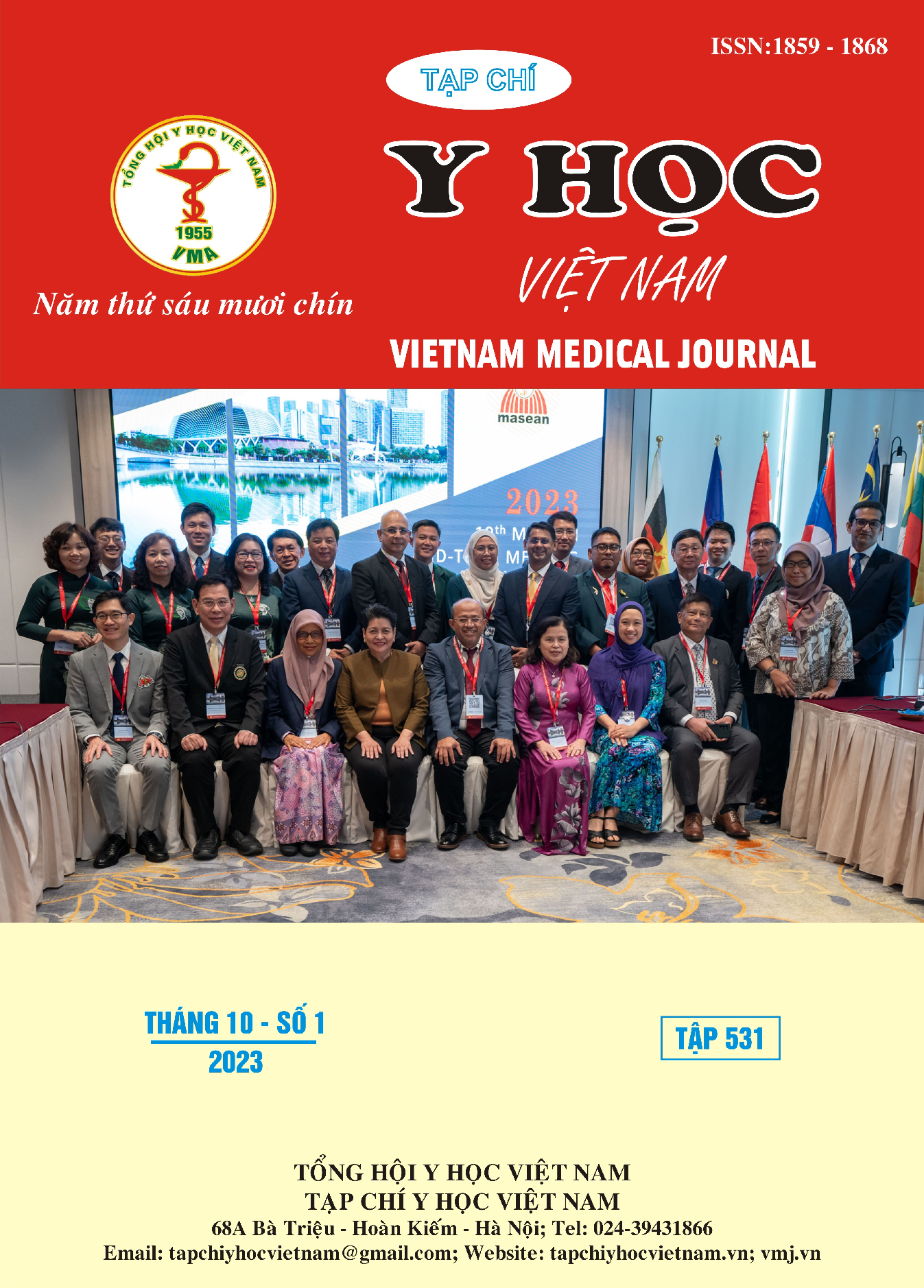THE SITUATION OF MULTI-RESISTANT TB AND TREATMENT RESULTS DURING 3 YEARS 2018-2020 IN DONG THAP PROVINCE
Main Article Content
Abstract
Background: Tuberculosis is still a global health problem, one of the 10 leading causes of death worldwide, especially multidrug-resistant tuberculosis. Currently, the drug-resistance of MTB is a dangerous medical problem, with morbidity and mortality rates constantly increasing in the world, in Vietnam and in Dong Thap. Objectives: 1) Determine the rate and characteristics of drug-resistant tuberculosis in new AFB (+) tuberculosis patients in the 3 years 2018-2020 in Dong Thap province, 2) Evaluate the results of multidrug-resistant tuberculosis treatment in the year 2020 in Dong Thap Province. Subjects and methods: A cross-sectional descriptive and analytical study was conducted on all 229 multi-drug-resistant tuberculosis patients enrolled for treatment from 2018-2020 in Dong Thap. Record the prevalence of drug-resistant TB/new TB AFB (+), the rate of multi-resistant TB/100.00 people in Dong Thap province. Describe the epidemiological characteristics of multi-drug-resistant tuberculosis patients and evaluate the results of multi-drug-resistant tuberculosis treatment in 3 years 2018-2020 in Dong Thap. Results: In 3 years (2018-2020), 229 cases of drug-resistant TB were recovered, the rate of multi-resistant TB/ number of new TB patients AFB (+) was 1.5%, The rate of multi-resistant tuberculosis/patient treated for tuberculosis is 20%. The rate of multi-drug-resistant tuberculosis/number of tuberculosis cases is 2.6%. The epidemiological characteristics of drug-resistant tuberculosis: The ratio of male/female patients is 4.6; Most of patients are in rural areas (73.80%); are farmers (34.06%) and reside in region 3 (39.7%) according to administrative boundaries. Following 229 MDR TB patients for 3 years from 2018 to 2020, the cure rate was 58.95% (135/229), completion of treatment was 13.54% (31). /229), The treatment success rate (including cure and completion rates) was 72.5% (166/229) and 27.5% (63/229) unsuccessful treatment (including failure rate, dropout rate). treatment, death and transfer to another place).
Article Details
Keywords
Multi-drug resistance, Dong Thap province.
References
2. Đào Thị Hương, Hoàng Hà, Trần Thế Hoàng (2021). “Kết quả quản lý điều trị lao kháng rifampicin tại Thái Nguyên giai đoạn 2016-2020 và một số yếu tố liên quan”. Tạp chí y học Việt Nam, tập 502, số 2 (2021), trang 224-228.
3. Nguyễn Lam, Phạm Văn Tạ, (2015), "Kết quả bước đầu điều trị lao phổi đa kháng thuốc bằng phát đồ 6KM, LFX, PTO, CS, Z, E /12LFX, PTO,CS,Z,E tại Bệnh viện Phổi Hà Nội ", Tạp chí Y-Dược học quân sự, 5, tr. 74-80.
4. Nguyễn Hữu Minh, Ngô Thanh Bình, (2015), & Cs. “Đánh giá hiệu quả điều trị lao phổi đa kháng thuốc Theo kết quả kháng sinh đồ đa kháng Từ 1/2009 đến tháng 12/2012”. Tạp chí Y học TP. Hồ Chí Minh, 19 (1), tr. 397-403.
5. Hồ Thị Dạ Thảo,Nguyễn Văn Bi , Trần Xuân Chương (2023). Nghiên cứu một số yếu tố nguy cơ của lao phổi kháng rifampicin tại tỉnh thừa thiên huế trường đại học y dược huế bệnh viện phổi tỉnh thừa thiên huế. TC Truyền nhiễm Việt Nam* Số đặc biệt 02(42)-2023, Tr. 41-46.
6. N.T.M. Phuong, N.V. N., N. B. Hoa, H.T. Thuy, K.C. Takarinda, K. Tayler-Smith, A. D. Harries, (2016), "Management and treatment outcomes of patients enrolled in MDR-TB treatment in Viet Nam", Public Health Action,6 (1), pp. 25-31.
7. Nhung N.V., et al, (2015), "The Fourth National Anti-Tuberculosis Drug Resistance Survey in Viet Nam", The International Journal of Tuberculosis and Lung Disease, 19 (6), pp. 670- 675.
8. Yang Zh., et al, (2017), "Adverse Events Associated with Treatment of Multidrug-Resistant Tuberculosis in China: An Ambispective Cohort Study", Med Sci Monit, 23, pp. 2348-2356.
9. WHO, (2019), Global Tuberculosis report 2019, pp. 1-2 , p 228.
10. WHO, (2021), Global Tuberculosis report 2021.


